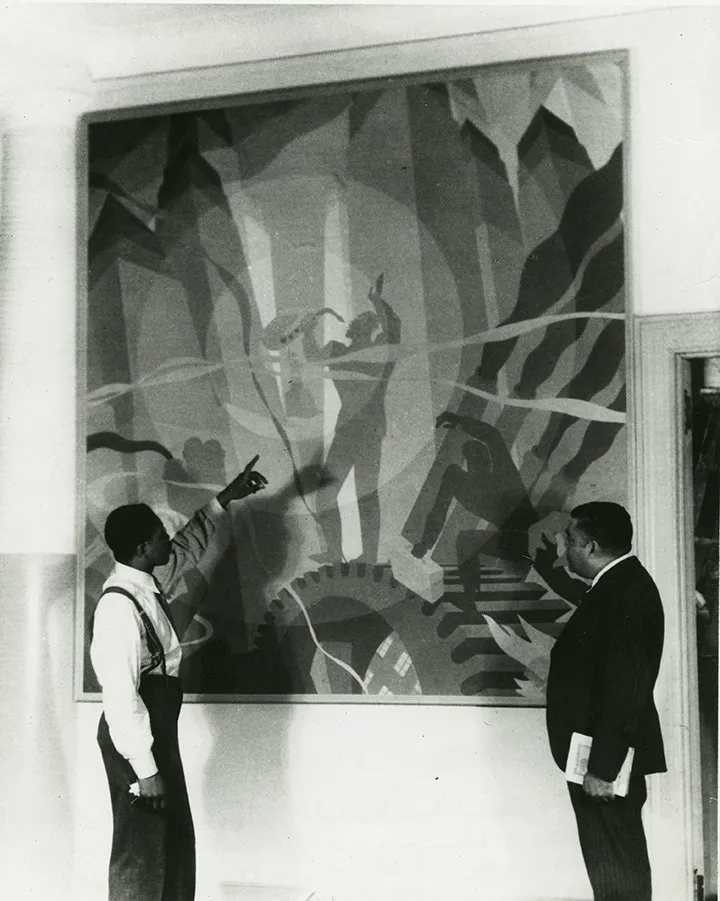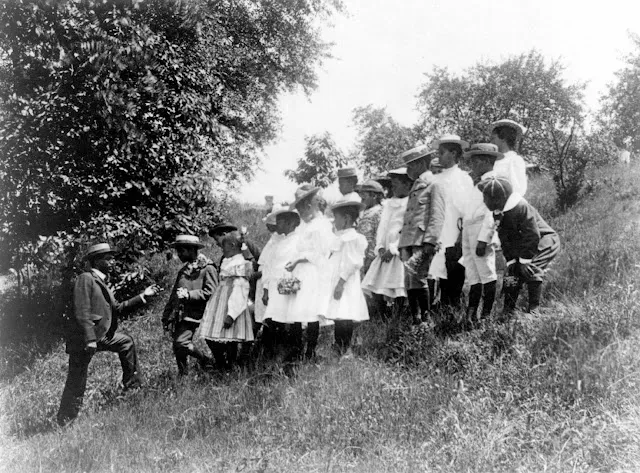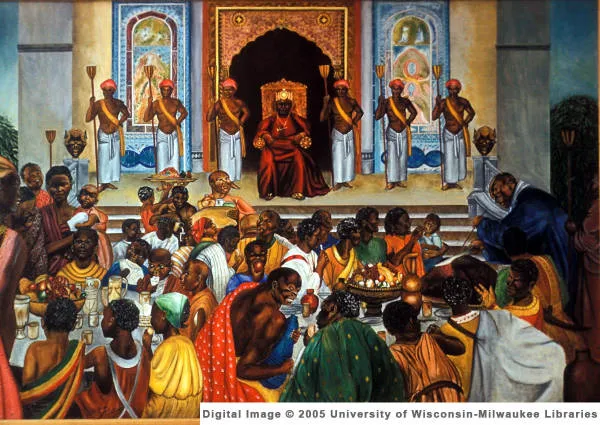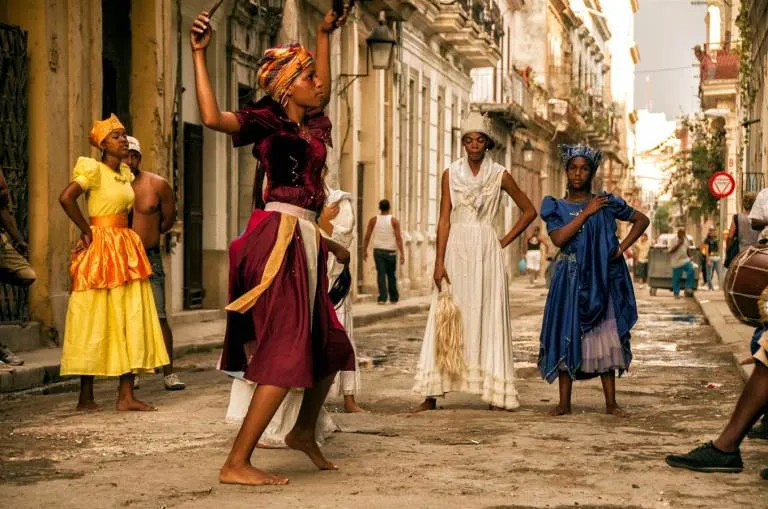Greetings, dear Steemians.
With this post I end the series on Puerto Rican/African-American bibliophile Arturo Schomburg. I hope you have enjoyed his story. You can check previous parts here:
Part I
Part II
Schomburg the Writer
 Source
Source

Schomburg is generally referred to as “bibliophile, bibliographer, curator, historian, and Pan-Africanist” (Oxford Companion 644), but this last attribute is usually the least commended. Actually, his ideas regarding the integration of a single black cultural identity composed of the different peoples of African descent was probably what distinguished, but at the same time, distanced him from the leaders of the Harlem Renaissance and from scholarly recognition. His project seemed to be too ambitious and inclusive. Harlemites had a more specific and localized agenda which, despite welcoming cultural manifestations from other African peoples, had African Americans and the development of an aesthetic movement that could consolidate their identity as the priority. What mattered seemed to be what those external influences could do for African Americans, not what African Americans could do for them.
From his early political and revolutionary writings (of which unfortunately I could not get any full text sample, for none has been anthologized or published by Schomburg scholars), when he was part of the Cuban and Puerto Rican independence movements, to his late religious-oriented historical essays, Schomburg never abandoned the idea of African pride based on Pan-African discovery, divulgation, and integration of black figures and art worldwide. There were changes in his writings nonetheless, in terms of the remoteness of the references, the intensity of the call, or even perhaps in the tone of his arguments.
 Source
Source
There are very few pieces by Schomburg available to the casual researcher. Most of these writings are historical pamphlets in a way. But Schomburg lectured prolifically and was constantly writing letters to editors regarding current and historical events. It is possible that he expressed his opinions on the Scottsboro Nine trial which took place one year before his death.
Schomburg started publishing in the US around 1904. “Is Haiti Decadent?” was published in the Unique Advertiser (Schomburg Center Issue 137). In 1905 he published the biography of Plácido, a Cuban poet. “Racial Integrity,” published in 1913, is probably his most passionate and inspiring piece. In it Schomburg not only advocates the creation of a chair of Negro History in American schools but questions the efficacy of what up to then had been done. “ The modern school with its many books, but without systematic lectures, turns out many graduates who are lacking in retentiveness and no sooner than the sound of the words has left their teachers’ lips, the subject has been forgotten; and if they are called upon to explain the theme, it is reduced to an incomprehensible mass of meaningless words” (5). Schomburg goes even further defending the competence of self-taught men like himself by affirming that the overestimation graduates have is revealed when they step out “into the real world to meet the practical men with years of experience and mother wit” (5-6).
 Source
Source
However, Schomburg was not at all opposed to higher education; what he opposed was the dryness of that education, which usually translated into vain scholars, concerned only with the veneer of what was conventionally accepted as black art/culture/identity and who regarded non-scholars as minor or underqualified professionals. For Schomburg, style and form when publishing texts on African culture was irrelevant when the unity and strengthening of the race should be the priority. He asked for collections or lists of books written by his fellow black people; “if they lack style, let the children of tomorrow correct the omissions of their sires. Let them build upon the crude work. Let them, because of the opportunities that colleges and universities grant, crystallize the crude work and bring it out flawless” (7).
 Source
Source
From 1913 to 1924 Schomburg produced some “minor” pieces. In 1915, he wrote an appreciation to Phillis Wheatley’s first collected edition of her poems. In 1917, he published “Negro Composers and Musicians of the World.” In 1924, “The Negro and Christianity.” In 1925, Schomburg published his most anthologized piece, “The Negro Digs Up His Past.” This is probably his most polemic approach to the direction the Harlem movement was taking. In this piece, Schomburg not only retakes some of the concepts initiated in “Racial Integrity,” but also establishes an indirect (yet more overt) diatribe with the elitist Harlemites represented by Du Bois. Schomburg suggested a more scientific approach to the rediscovery of African culture as opposed to the rhetoric and propaganda advocated by Du Bois and his followers. By determining that the Negro, “throughout the centuries of controversy, had been an active collaborator of his own freedom;” that for the discredit of the race “negroes of attainment and genius have been unfairly disassociated from the group; and that the “remote racial origins of the Negro” not only “offer a record of credible group achievement,” but also they evidence the contributions of the Negro to the “development of human culture” (232) Schomburg attempted to validate the maxim, “one ounce of fact is worth a pound of controversy.”
 Source
Source
Schomburg’s subsequent writings were always an invitation to reconcile the common roots of African Americans with Africans of other parts of the world. In “My Trip to Cuba” (1933), Schomburg describes the different cultural manifestations that were taking place in Cuba as an example African Americans could reach for inspiration. He refers to poets, painters, sculptors, and statesmen. It seems paradoxical that Schomburg did not write in that vein regarding Puerto Rico. He seemed to feel more admiration for Cuba than for his native Puerto Rico. Partly, perhaps because Cuba achieved its independence and he saw black people, from intellectuals to artists, playing an important role, occupying important offices, and being responsible for the decisions taken regarding the future of the country. Puerto Ricans, after the United States’s intervention, still remained partly a colony and blacks were still struggling for their place in a racist society. This is not to say that there was not racism in Cuba, but at least African Cubans’ sense of identity and belongingness seemed to be more grounded.
 Source
Source
“Two Negro Missionaries” (1936) addresses the religious contributions of Africans in the history of America’s evangelization, citing two examples in particular, John Marrant and John Steward. Schomburg’s opinions on religions are easy to delineate, but it seems that at the end of his life he welcomed the idea that even religion, the one aspect of white domination most African American writers of his time questioned, could be considered another significant field where the Negro had contributed to the uplift of the race. After all, religion for Africans brought to the Americas became a tool to create identity and community.
Other pieces by Schomburg that for reasons of time and space cannot be discussed in this post are: “Notes on Panama and the Negro,” 1928; “General Antonio Maceo,” 1931 (a leader of the Cuban revolution of Venezuelan father and African Cuban mother who died in an ambush in 1896); “African Explorations,” 1934; and “Henri Christophe, King of Haiti,” (1935).I find interesting that one of Schomburg’s last writings was on Haitian heroes. I think it tells a lot about Schomburg trying to reach back to his Caribbean roots and the adventurous spirit that flamed his childhood.
HIS LEGACY
 Source
Source
Modern librarians and researchers can speak of the importance of Schomburg’s achievement, “the Schomburg Collection of Negro Literature and History is the most important and extensive of the collections in public libraries” (Porter 297). As Porter later adds, “the effort of bibliophiles like Schomburg was “the seed of a tremendous harvest” (303).Posterity has been gradually revalidating his contributions not only to the world of books or the African American literary movement, but to the whole idea of racial internationalism and the integration of the African Diaspora.
Despite the fact that Arturo Schomburg has not yet been fully recognized by most scholars as a key figure in the development of the Harlem Renaissance, the fact that his legacy, The Schomburg Center for Research in Black Culture, has transcended the timeline of the Renaissance and is now a monument not of African American pride, but of all Pan-African cultures, speaks volumes of the stature of this son of Puerto Rico.
 Source
Source
Thanks for your visit

Works Cited or Consulted
Clarke, John Henrik. “The Influence of Arthur A. Schomburg on My Concept of Africana Studies.” Phylon 49 (1992): 4-9.
Crew, Spencer. “Arthur Alfonso Schomburg, Black Bibliophile and Collector: A Biography.” Book Review. Oral History Review 19 (1991): 150-2.
Hart, Robert C. “Black-White Literary Relation in the Harlem Renaissance.” African Literature 44 (1973): 612-28.
Hoffnung-Garskof, Jesse. “The Migration of Arturo Schomburg: On Being Antillano, Negro, and Puerto Rican in New York 1891-1938.” Journal of American Ethnicity History 21 (2001): 3-49.
Lewis, David L. When Harlem Was in Vogue. New York: Penguin Books, 1997.
Lewis, Earl. “To Turn as on a Pivot: Writing African Americans into a History of Overlapping Diasporas.” The American Historical Review 100 (1995): 765-87.
Ortiz, Victoria. The Legacy of Arthur A. Schomburg. A Celebration of the Past, a Vision of the Future. The Schomburg Collection Endowment Fund. The New York Public Library, 1986.
Oxford Companion to African American Literature. Eds. William Andrews, Frances Smith Foster, and Trudier Harris. New York: Oxford UP, 1997.
Porter, Dorothy. “Documentation on the Afro-American: Familiar and Less Familiar Sources. ”African Studies Bulletin 12 (1969): 293-303.
Sanchez Gonzalez, Lisa. “Modernism and Boricua Literature: A Reconsideration of Arturo Schomburg and William Carlos Williams.”
Schomburg, Arthur A. “My Trip to Cuba in Quest of Negro Books.” A Stranger in the Village. Ed. Farah J. Griffin and Cheryl J. Fish. Boston: Beacon, 1998.
---. “Racial Integrity. A Plea for the Establishment of a Chair of Negro History in Our Schools and Colleges, etc.” Baltimore: Black Classic Press, 1979.
---. “The Negro Digs Up His Past.” The New Negro. Voices of the Harlem Renaissance. Ed. Alain Locke. Touchstone: New York, 1997.
---. “Two Negro Missionaries to the American Indians, John Marrant and John Steward.” The Journal of Negro History 21 (1936): 394-405.
Sinnette, Elinor Des Verney. Arthur Alonso Schomburg, Black Bibliophile & Collector. A Biography. Detroit: Wayne, 1989.
Tolson, Nancy. “Making Books Available: The Role of Early Libraries, Librarians, and Booksellers in the Promotion of African American Children’s Literature.” African American Review 32 (1998): 9-16.
“Harlem timeline.” CHICO. School of Information, University of Michigan
http://www.si.umich.edu/CHICO/Harlem/timex/timeline.html November, 2003

 Visítanos en: www.equipocardumen.com.ve
Visítanos en: www.equipocardumen.com.ve


 Source
Source Source
Source








